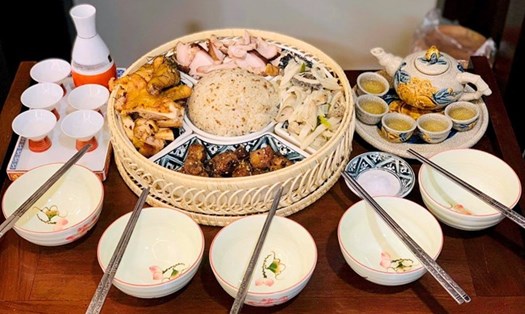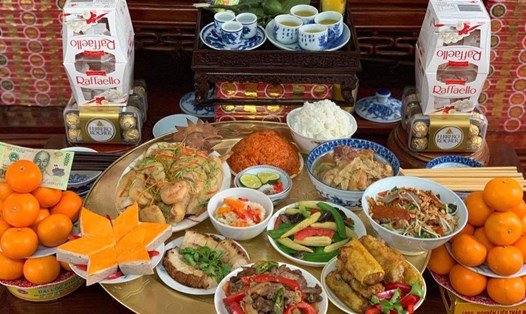Every year-end, in addition to preparing the ceremony to worship the Kitchen Gods, Vietnamese people also have the custom of cleaning and repairing their ancestors' graves, called "sao mo" or "cham ma".
This custom is both to demonstrate the lifestyle of "remembering the source of water when drinking", to show respect and gratitude to the deceased, and to invite ancestors to celebrate Tet with their descendants.
According to the book "Vietnamese Traditional Prayers" - Culture and Information Publishing House, the tomb-sweeping ceremony can be of different sizes, usually including incense, betel and areca nuts, votive paper money, wine, meat (pork leg, boiled chicken or a piece of lean ham), and fruit.
When arriving at the cemetery or the area where the family grave is located, the homeowner places the offerings in the common altar. Then, light the lamp, incense, bow three times to the Spirit of the Land and pray.
Below are suggestions for traditional grave-sweeping offerings:
- 10 fresh red flowers
- 3 betel leaves, 3 areca nuts
- 1/2 liter of wine, 5 wine glasses and 10 cans of beer
- 2 packs of cigarettes, 2 packs of tea
- 2 red cup candles
- 5 horses (each one color), each horse has 10 gold coins (including coins, hell money and gold leaf money).
- 5 sets of clothes
- 4 plates for gold coins
In addition, you can prepare a vegetarian or non-vegetarian offering depending on your family's tradition. Vegetarian offerings usually include cakes, rice, salt, honey, sticky rice, and sweet soup. Non-vegetarian offerings can include ham hocks, boiled chicken, or ham slices.
Even if you only display offerings at the grave, you should consider how to arrange them beautifully, solemnly, and neatly, showing both ingenuity and sophistication, and showing respect for the deceased.
Before cleaning the grave, the head of the family or an elder needs to light incense, candles, present offerings, ask for permission and read the year-end grave cleaning prayer. While waiting for the incense to burn out, the children and grandchildren can clean the grave and when the incense has burned 2/3, the homeowner can burn votive papers and ask for blessings.
The tomb-sweeping ceremony is usually performed after the Kitchen Gods' Day until the afternoon of the 30th of Tet or the afternoon of the 29th of Tet if it is a short month. You should visit the graves from the morning until before 3pm, avoid visiting the graves in the late afternoon, when it is almost dark because it is easy to get contaminated with bad air.









